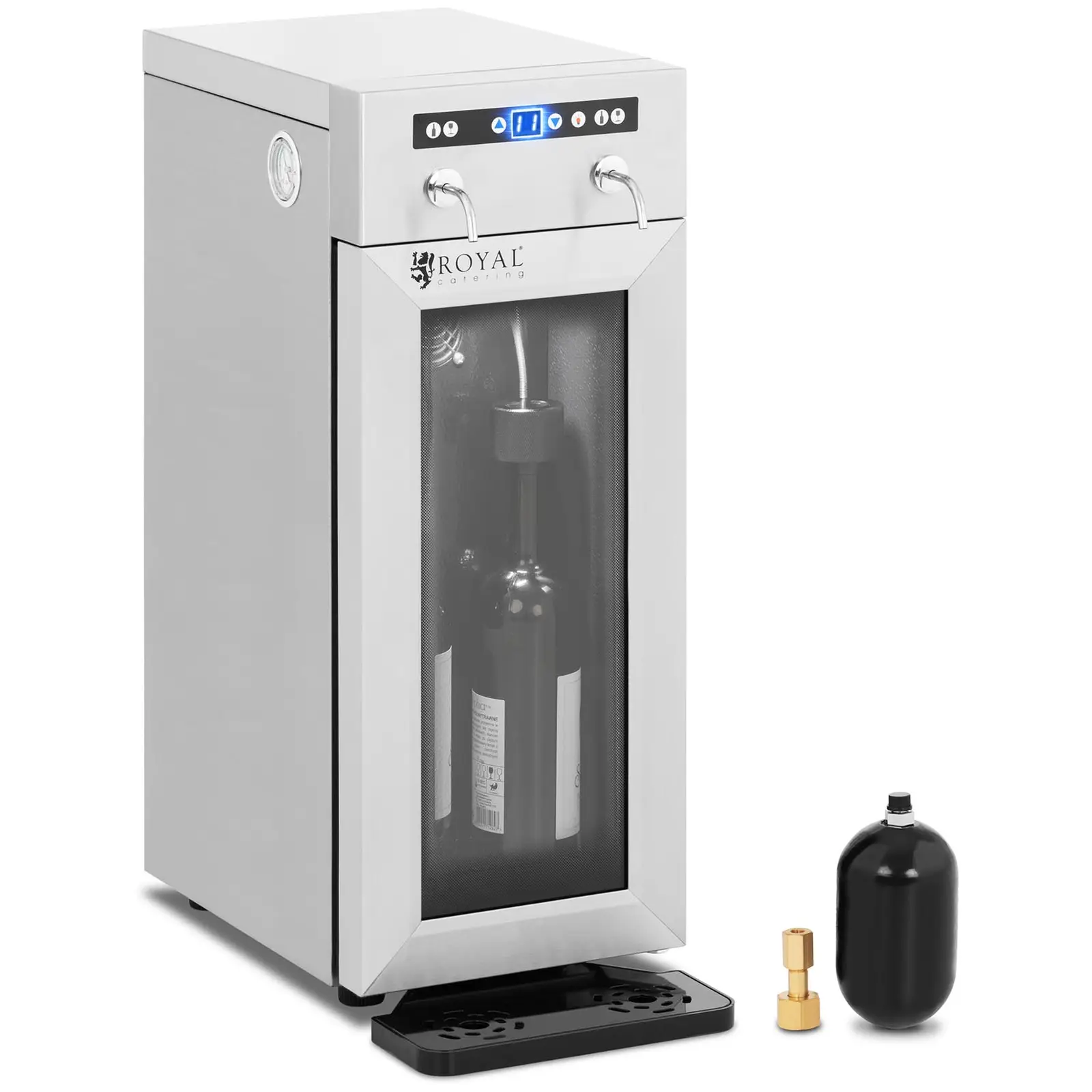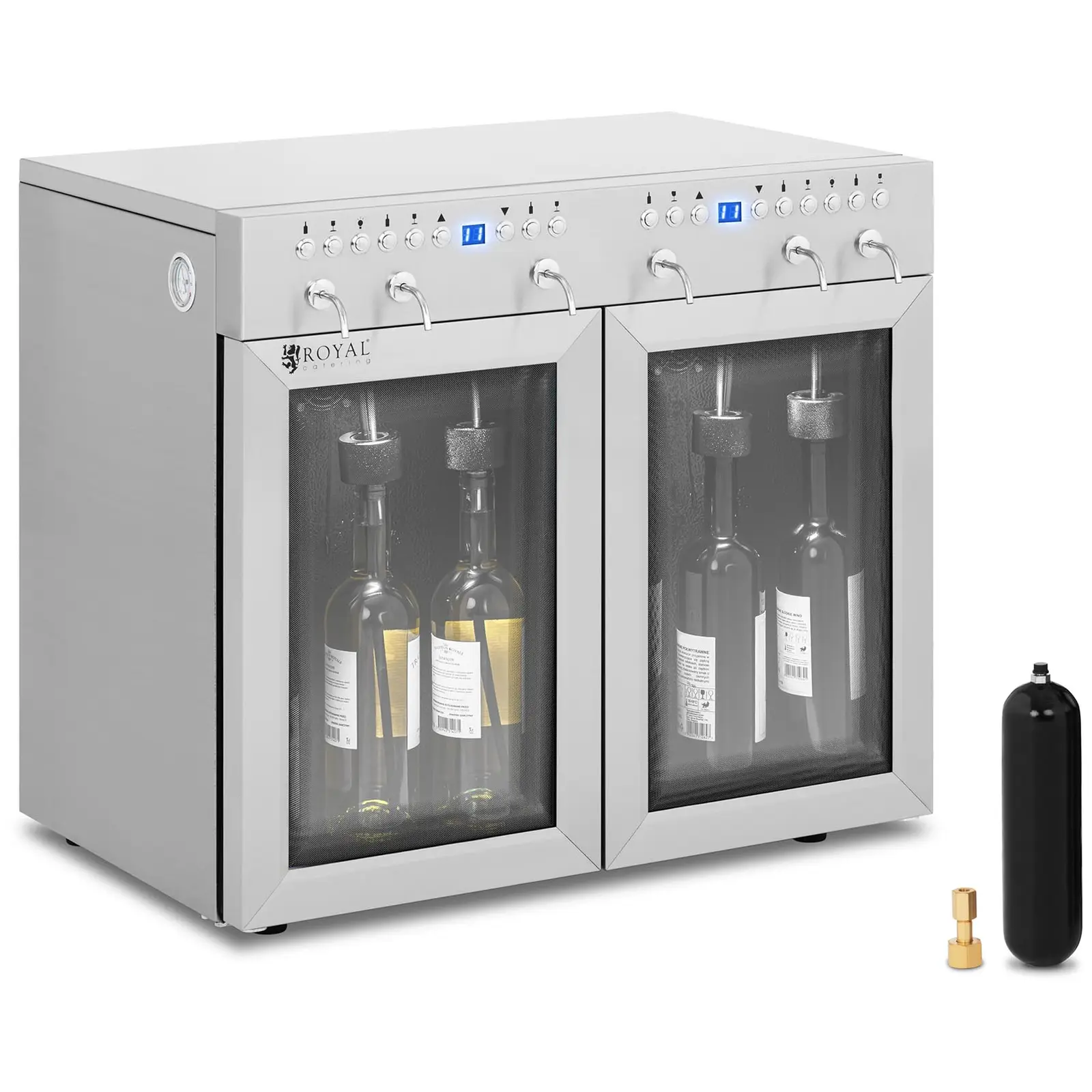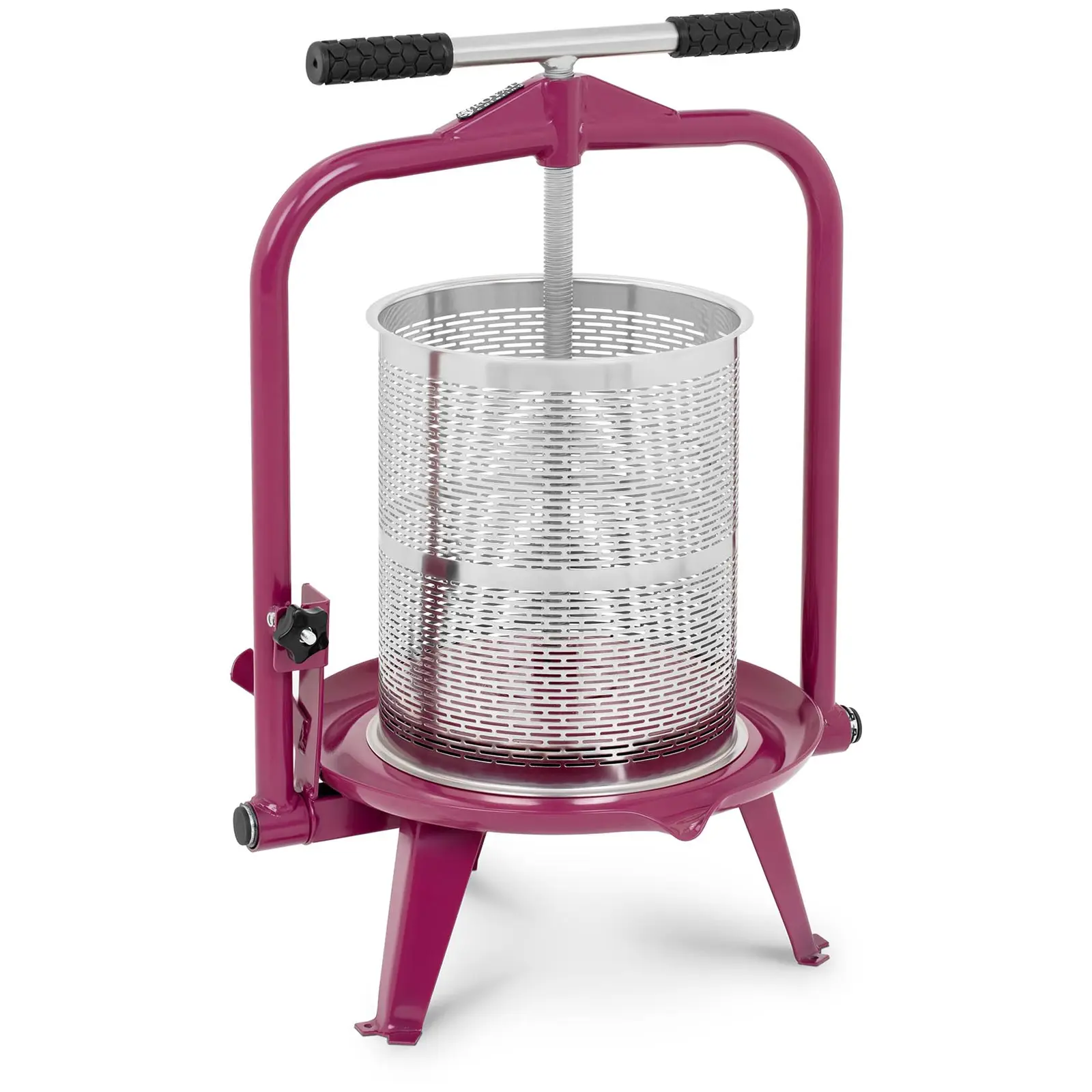Wine is one of the most popular drinks, dating back to ancient times. The oldest known records of wine date back to 8500 BC and were found in the Caucasus region. It is safe to say that wine has been part of our civilisation since the dawn of time, playing a role in the reign of empires and superpowers.

Wine is one of the most popular drinks, dating back to ancient times. The oldest known records of wine date back to 8500 BC and were found in the Caucasus region. It is safe to say that wine has been part of our civilisation since the dawn of time, playing a role in the reign of empires and superpowers.
Nowadays, wine is an important part of social meetings and special events. It is a great addition to meals, and even a ritual during romantic dinners or other special occasions. It is therefore no surprise that it is an common element on the menu of most restaurants, which offer their guests various types of wines, letting everyone can choose one to perfectly match their meal.
5 types of wine
Wine is produced during fermentation of fruits, usually grapes, which is why for all non-grape wines the name of the fruit should be added to the word “wine”. In turn the word “wine” on its own is used solely for wine made of grapes.
There are many different grape varieties, so the number of different types of wine is enough to write a book about. However, taking into account the basic criteria, such as taste, colour and consistency, we can distinguish the following types of wine.
White wine
White wine is made from light grape varieties. Dry, semi-dry and sweet – these are the most common choices. White wine goes perfectly with poultry, fish and seafood. It is usually recommended that the fatter the dish, the drier and more aromatic the wine. Sweet white wines can be served without any accompanying meal.
Red wine
Red wine is just as popular as white wine. It is made of red grapes, and their skin gives the red colour, which is released as a result of fermentation, and depending on the type of fruit they can give the drink a ruby red, purple, dark cherry or even brick red colour. Red wine goes well with spicy or heavier dishes. A characteristic feature of red wine is that if it was aged for a long time, it should be opened at least half an hour before consumption.
Rosé
The next one on the list of types is rosé wine. It is produced by short-term tinting of white wine with the skin of red grapes. As a result, a whole range of shades of pink are possible, most often semi-sweet. Rose wine is a great thirst-quencher, so it is best served chilled. It is a great option in summer, not only full of flavour, but also refreshing.
Dessert wine
When discussing the basic types of wine, a type called dessert wine also deserves a mention. It is produced from the fermentation of very ripe and sometimes even overripe grapes covered with noble rot, scientifically known as Botrytis cinerea, which is a grey fungus that impacts a variety of plants, vegetables, and fruits, but most notably wine grapes. As a result you obtain an alcohol that is so sweet and thick that it is a great addition to desserts (hence the name dessert wine). With the principle that your meal should never be sweeter than the wine in mind, it is an ideal solution. This type of wine can even be treated as a dessert in itself after a heavy meal.
Sparkling wine
The last type of wine that we will briefly discuss is sparkling wine. This type of wine originates from Champagne in France, and the most popular and at the same time most expensive variety is, of course, Champagne. Sparkling wine is a wine style characterised by effervescence in the wine due to high levels of carbon dioxide, which is produced during fermentation or is added to the wine. Sparkling wine generally comes in two types – sweet or dry. The latter is perfect as an aperitif, e.g. with soup.
-
Mulled Wine Warmer – 27 L – Drain Tap 129.00 €
-
Mulled Wine Warmer – 27 l – Timer – Drain Tap – LCD-Display
169.00 €159.00 € -
Wine Fridge – with taps – 6 bottles
-
Metal Wine Rack – 200 kg – silver
85.00 €79.00 €
Popular wine varieties
The taste of wine depends on many factors. These could be the recipe or the aging time, but also the variety of grapes used in production. There are many kinds of grapes, and some of them grow only in certain countries. The type of soil, prevailing weather conditions and regional wine traditions therefore play an important role, influencing both the flavour and body of wine.
Despite the fact that there are as many as 1,300 varieties of grapes used for wine production, you will usually come across a few of the most popular ones, so it would be good to know them.
Cabernet Sauvignon
The Cabernet Sauvignon variety is characterised primarily by relatively hard vines, thanks to which it is able to survive the winter very well. This grapevine blooms quite late and therefore does not bear fruit and ripen until autumn. This variety produces quite small, dark blue or even black grapes. Cabernet Sauvignon grows particularly well in California, but it is also popular in Australia and New Zealand. Australian grapes give the wine more acidity and a more distinct flavour, while those from New Zealand, due to the slightly cooler climate, make lighter wine with a more herbal bouquet.
Cabernet is also popular in South America, mainly in Chile, where it accounts for as much as a quarter of all wine produced. Fruits from that region are very intense, producing an extremely sweet wine with a high glycerol content. Seasoned wine connoisseurs even compare it to a good Bordeaux.
But let’s not forget about Italy, where Cabernet Sauvignon has been grown since 1820. Iconic names such as Sassicaia and Gaja are produced from this grape variety.
Pinot Noir
The Pinot Noir variety is chiefly associated with the Burgundy region of France. The types of wine it produces are commonly considered the most feminine, and are distinguished by their soft red colour. Grapevines of this variety grow best on well-drained ground, due to their high susceptibility to rotting. In the case of Pinot Noir, there is no single characteristic flavour. It all depends on where it grows.
This variant also ripens early, making it ideal for growing in cooler climates. In Italy, Pinot Noir crops can be found in the north of the country, but they are mainly used to produce common types of wine. In France, it is popular in Burgundy, Alsace and Champagne. In the last example it is used to make champagne.
In addition to European countries, including Germany, Pinot Noir is also popular in California, Oregon, and even Australia, although mainly in the cooler regions.
Syrah
Syrah comes from the city of Shiraz located in the south-east of Iran. An advantage is that it is very easy to grow, and it gives much bigger crops than the Cabernet Sauvignon variety discussed earlier. However, there are also some drawbacks, including the fact that it does not always produce good wine. But when it does, the quality is incredibly good.
The Syrah variety is currently very popular in Australia. Although it is grown in virtually the entire country, the largest clusters of plantations can be found in the hotter parts of the country. The most famous Australian wine produced from this particular variety is Grange.
Pinot Gris
Next on the list is Pinot Gris, a derivative of the Pinot Noir variety we already know. It also comes from Burgundy and is characterised by a somewhat dark skin for a white grapevine. The types of wine it makes therefore have a slightly more intense colour, and sometimes you will even see pinkish reflections.
Pinot Gris is grown in Italy, and is used to make Pinot Grigio wine. This variety is equally popular in Germany, Slovakia, the Czech Republic, as well as Alsace and Hungary. It is used to produce wine with low acidity and a delicate flavour and bouquet. .
Chardonnay
Chardonnay is grown in France, New Zealand, as well as in western Australia, northern Italy, and on the coasts of Chile. Its taste depends on the temperature of the area where the grapes are grown. In colder climates it gives a more refreshing taste, with greater acidity. In warmer climates, on the other hand, it produces a more oily and at the same time much sweeter wine.
Chardonnay is also one of the three grape varieties officially approved for the production of champagne. You can recognise it by the label with the words blanc de blanc.
Sauvignon Blanc
The last of the popular varieties we shall be looking at is Sauvignon Blanc, which comes from France and is characterised by very bright fruit. An undeniable advantage of this variety is its unprecedented resistance to mildew, as well as easier cultivation. Although you will also find Sauvignon Blanc in South Africa, New Zealand, Chile, Australia and California, it is good to know that it does not like excessively high temperatures. It is therefore grown in the slightly cooler regions of these countries.
Sauvignon Blanc is very often used in combination with other varieties, such as Semmilon. This is how a classic Bordeaux is made. By adding grapes from the Muscadelle variety, you get a wine called Sauternes. But this is not always the case, and there are wines made exclusively from Sauvignon Blanc.
Decorating the and how to serve wine in restaurants
You now know the most basic types of wine, as well as the different varieties of grape used. Let’s move on, therefore, to how it should be served in a restaurant. Let’s start off with the type of restaurant in question. A lot depends on your creativity and approach but it is important to make your guests feel special so that they will want to come back, taken in by the enchanting atmosphere. Therefore, it is worth implementing the concept of mise en place.
The service is also very important, in order to professionally present your wine offer in a friendly manner. The satisfaction of your guests will also depend on their preferences, which will differ from guest to guest, so it’s good to have different types of wine up on offer – dry, semi-dry, sweet, etc.
How should wine be served? The waiter should start off by bringing the ordered wine to the table, where they should use a corkscrew or a special knife to open the bottle. The waiter should then use a napkin to wipe the neck of the bottle and discreetly remove the cork. The next step is pouring the wine, although your guests should have a chance to taste the wine first. For this purpose the waiter should only pour a small amount. Only after your guests have confirmed that they like it should the wine then be poured into their glasses. And remember the basic rule that you should only fill the glasses up to 1/3 of their capacity.
Additionally, in professional catering, the glasses should match the type of wine being served.
Summary
Wine, as we know it, dates back to ancient times. It is produced as a result of the fermentation of grapes, of which, as already mentioned, there are over 1,300 varieties. The taste, colour, bouquet and consistency of wine depend, among others, on the variety. The area where the grapes where grown is also important, as well as the method of producing the wine. As a result you will come across various types of wine that could be included on your restaurant menu.










Share